Seattle Fall & Winter Home Prep Checklist
August 14, 2025
The Seattle summer is truly a special time of year. The city is on the receiving end of perfect temperatures and nearly 16 hours of daylight on the summer solstice but all good things come to an end. As we delve deeper into the month of August, shorter days serve as a stark reminder that, **drapes our faux fur rug over our shoulders** “winter is coming”, and along with it, so is winter home prep!
Let’s be real, the last thing we want to think about right now is a 4pm sunset, but while there is still some summer sun left to be had, we’ve got a couple of things on our end-of-summer to-do list:
1. Keep working on our tan and,
2. Get a head start on preparing our homes for the fall/winter seasons.
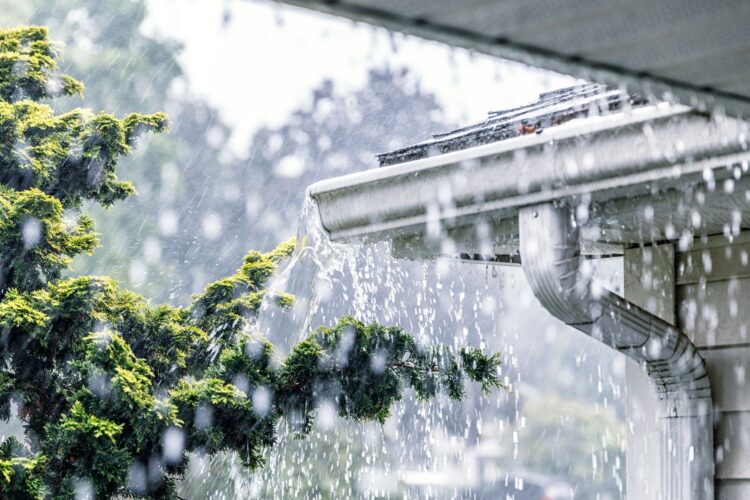
The typical Seattle winter weather can range from the occasional ice and snowfall, to the more intense wintry mix that can last for days, and of course, rain. In our opinion, now is the time for winter home prep, to keep your family and home cozy and bright during those grey days we have coming our way. Get your home winter-ready with a few tips from us at Harjo Construction with our fall and winter home prep checklist!
Windows and Doors
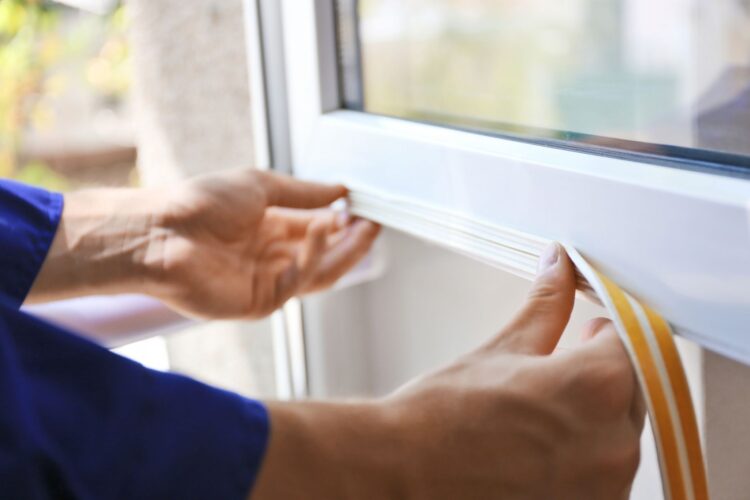
The exteriors of your home will take on the brunt of the winter weather, especially during rain and snow. Homes in Seattle, particularly historic homes, tend to shift and settle over time, creating tiny gaps where moisture can wreak havoc on the home including a potential risk for mildew and mold.
Inspect areas around your windows and doors for cracks or large gaps and fill them as soon as possible – you may be losing efficiency when attempting to heat your home once those cold fronts hit. Even small air leaks can harbor moisture, leading to mold, drafts, and higher heating bills.
Clean the tracks of windows and sliding glass doors to rid any debris that could be blocking designed drainage holes. Seal any cracks around windows and doors to ensure that your home retains its warmth and to keep energy costs as low as possible.
Insulation
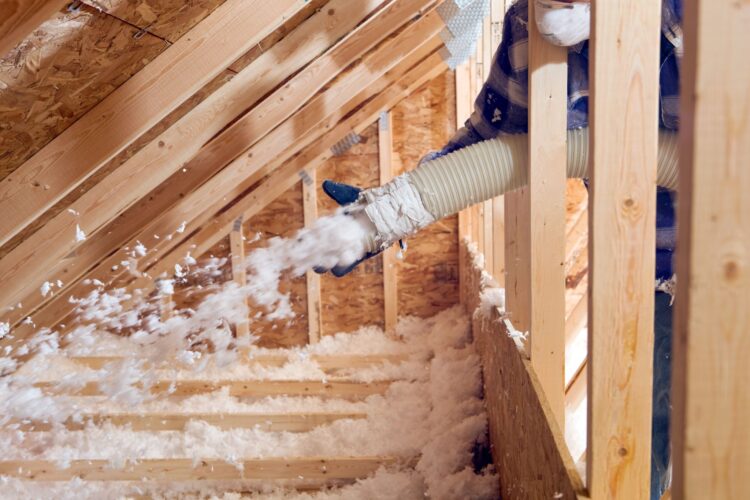
Ensuring your home has the proper insulation can be vital to making your home a warm and cozy safe haven from winter weather. Quality insulation not only keeps your family and guests warm, it helps keep your energy costs down by maintaining the heat in your home more efficiently.
Focus on insulating key areas like attics, crawl spaces, and around windows and doors to prevent heat loss and improve energy efficiency. According to the Environmental Protection Agency, the main source of heat loss in the winter is due to an under-insulated attic space. If you can see floor joists in your attic, it may be time to install more insulation. Fiberglass blown-in insulation is a quick and easy option to add insulation to an attic space. Thermal Insulation can also help improve temperature control in your basement and waterproof the home by keeping damaging moisture out. Draft stops at the base of entryways can also effectively block cold drafts and debris while improving your home’s energy efficiency.
Roof and Gutter Maintenance
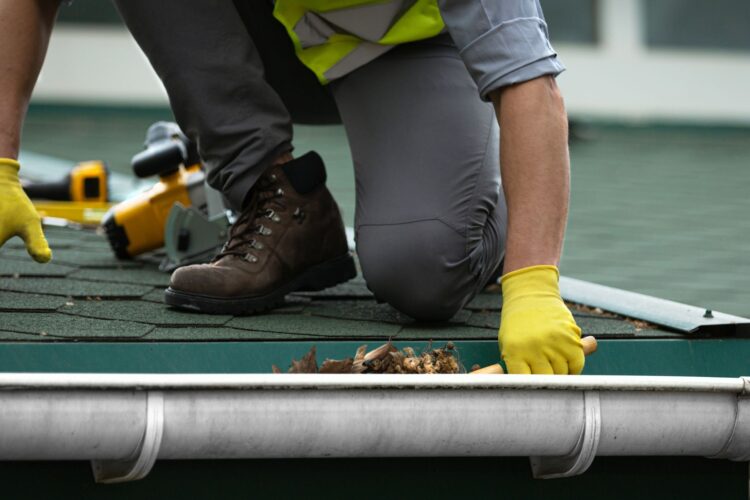
A major winter home prep to-do is to check your roof to ensure there is no damaged, loose, curling, or missing shingles, which can allow for water to leak into your home. If you notice any areas of your roof that may require repair, or are unable to physically inspect your roof, call a local roofing professional to repair any issues before winter arrives. Treat and remove any moss on your roof as well, as it can trap moisture against the shingles and lead to leaks.
While you’re up there, give your gutters a good inspection. Gutter maintenance is crucial in protecting your home from inclement weather. It’s important to check the gutters on your home regularly for damage, leaks, and sagging sections, and to clean them out at least twice a year.
If trees hang over your home, gutter guards are an excellent preventative pre-winter upgrade.
Once all your leaves have dropped, it’s a good time to make sure that your gutters are free of debris – clogged gutters can cause a variety of issues in your home including overflowing and flooding. Clean out all moss, leaves, and pine needles. Remember to direct downspout flows at least five feet away from your foundation, without sending flows to adjacent properties.
Rake or Mulching Falling Leaves
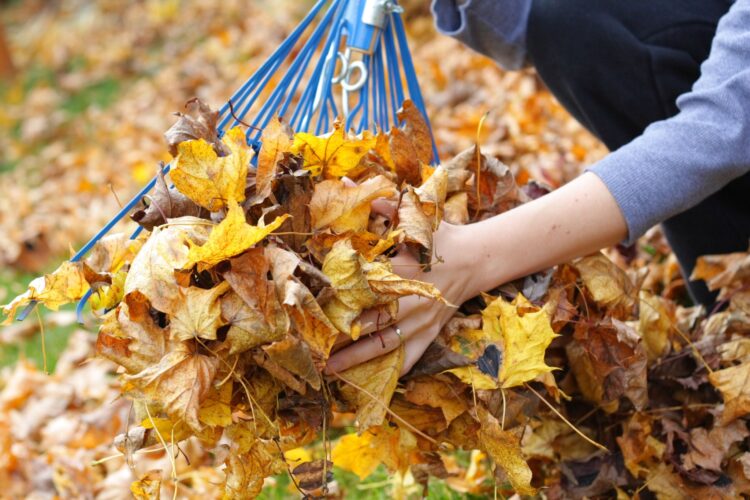
Pumpkin spice, playoff baseball, and leaping into a pile of freshly raked leaves are just a few autumnal joys to look forward to, right? If you’re like us, raking is not your favorite fall pastime, and oftentimes it’s not the best for your lawn in the long run.
If you aren’t a fan of the rake, may we suggest mulching your leaves with a mulching mower? Mowing your leaves is generally better for your lawn than raking, as it helps return nutrients to the soil and reduces waste. While raking can make for a much cleaner looking lawn, (and a good workout!) if you don’t have the time or energy to rake and bag your leaves, mowing your leaves is a natural alternative for maintaining your home’s lawn in the fall and a healthier looking lawn in the spring.
Basement Protection
Basements can cause all sorts of problems for homeowners, especially in Seattle, once heavy rain hits the forecast. For fall and winter home prep, check for any existing mold or mildew in your basement during the dry season. If your basement smells moldy, attempt to identify the source of the scent and thoroughly clean the affected areas with a mold-killing solution. Take effective measures by adding a dehumidifier and improving ventilation in the basement. Baking soda and activated charcoal can help neutralize any lingering odors.
Ensure all exterior windows and doors are properly sealed so outside moisture and drafts are unable to enter the pace. Get ahead of any potential issues by installing a sump pump. If your home is already equipped with one, give it a quality check. You could also consider sealing the basement walls with waterproof paint
Prevent Frozen Pipes

Halloween will come and go before we know it, but the real horror story that can cause a gory mess in your home are frozen or busted pipes that cause your basement to flood. Before the cold settles in, add foam insulation to any exposed pipes in your basement or crawl space to prevent the risk of leakage and frozen pipes. Turn off water to outside faucets, disconnect garden hoses that may prevent faucets from properly draining, and use faucet covers to reduce the risk of frozen pipes.
A sump pump with a backup battery can help protect your home against flood damages from frozen pipes. You can also look into having interior drains or flood vents professionally installed to mitigate any possible flooding.
Service Your Chimney and HVAC System
When is that last time you had your chimney cleaned? If your home has one, now is a good time to have your chimney serviced. A good rule of thumb is, if you use your chimney three times a week, you should have it cleaned once a year. If you use it only once or twice a week, you can get away with servicing every other year. We recommend you have your chimney cleaned and inspected annually to identify any internal water damage that may have occurred (and for best results during peak cozy season).
Speaking of heat, we also recommend you get your HVAC system inspected and cleaned annually. Many of us haven’t had our heat on in months, but the when the first cold front is in the forecast, the last thing you want is for your HVAC to H-CANT. (sorry)
A well-maintained heating system is essential for a comfortable home in the winter – get ahead of it before the winter months to make sure everything is clean and running as smooth as possible. Seal any exposed ductwork with aluminum tape to keep your heat inside. If your home doesn’t already have one, consider installing a programmable thermostat to optimize your home’s heating schedule and keep energy costs down. Don’t forget to replace furnace filters or air filters in your home to improve heat efficiency and output (a winter home prep must!).
Preparing for Rain and Possible Flooding
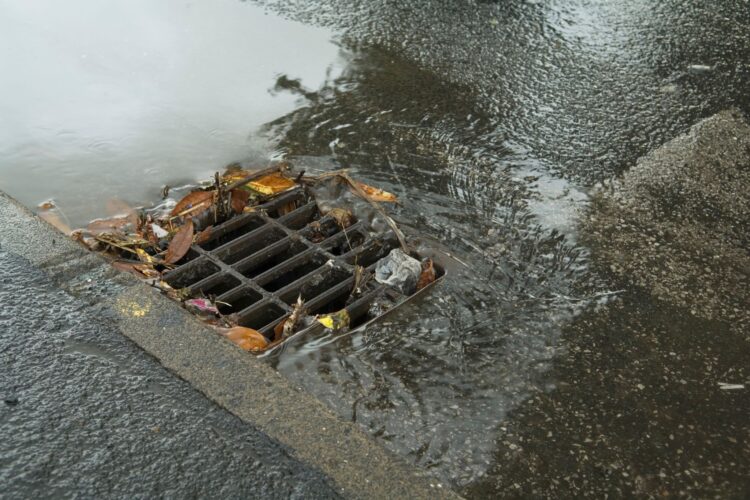
In Seattle, we don’t just live with the rain, we embrace it, and the best time to prepare for rain is when it’s still dry! Ready your home by clearing any leaves or debris from blocking drains on your property to prevent possible flooding. Check drainage systems on your property before the threat of inclement weather. Inspecting catch basins or other drainage systems regularly gives you and your home the best opportunity to have a worry-free winter. Other maintenance options include reaching out to a professional to “video inspect” your underground drainage system.
For our DIY-ers, remember to stay on the sidewalk or parking strip (not in the road) and use appropriate tools to remove any obstructions, if any, near your property’s drainage. If you have a sloped driveway, clear any drainage at the bottom of the slope. Appropriately place debris in yard waste or garbage and definitely take advantage of extra yard waste pick-ups in the fall (the city of Seattle offers free extra yard waste pickup in November).
Water causes unstable slopes, mudslides, and erosion. Should you live at the base of a hill or on a bluff, check that drainage and retaining walls are also properly functioning. Check your property for signs of earth movement, such as leaning trees, or cracks in the soil or sidewalks. If you notice a problem on your property, contact a Soils Engineer (pop “Engineers Geotechnical Soils” into Google) to perform an evaluation.
You can also create “flow paths” on your property where water can flow during a storm without damaging your neighbors’ properties or valuable gardens by using sandbags to redirect flows. Plantings can also reduce the chance of a mudslide or flooding.
Prep for Winter Storms
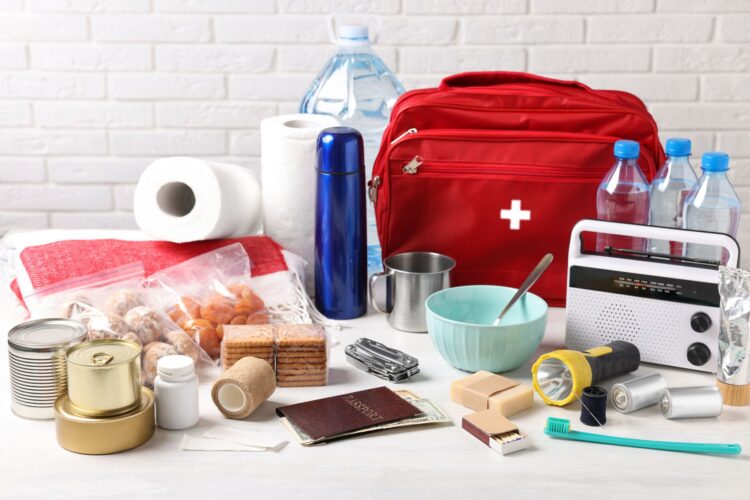
When heavy rain, wind, and snow can be expected, knowing you will be safe inside your home even without power, is worth so much more than just peace of mind. Storm windows and doors that are able to withstand strong winds and heavy snow are a great winter upgrade to your home.
There are also some smaller things you can do to prepare for extreme winter weather. Familiarize yourself with your home’s shutoff valves or switches, so you know where to go in case of emergencies. Stock your home with an emergency kit with useful and essential items such as non-perishable canned goods, water bottles, first aid, candles, and portable chargers for devices. Also, if your home is susceptible to power outages or your neighborhood has power lines near the tree canopy, consider purchasing a small generator, in case of emergency.
Test Smoke and Carbon Monoxide Detectors
During the winter, we often use heating appliances more frequently, which increases the risk of fire hazards and carbon monoxide exposure. It’s a great time to test your smoke and carbon monoxide detectors to make sure they are functioning correctly. Replace the batteries in these detectors as necessary.
Harjo Construction’s Fall & Winter Home Prep Checklist and Other Resources
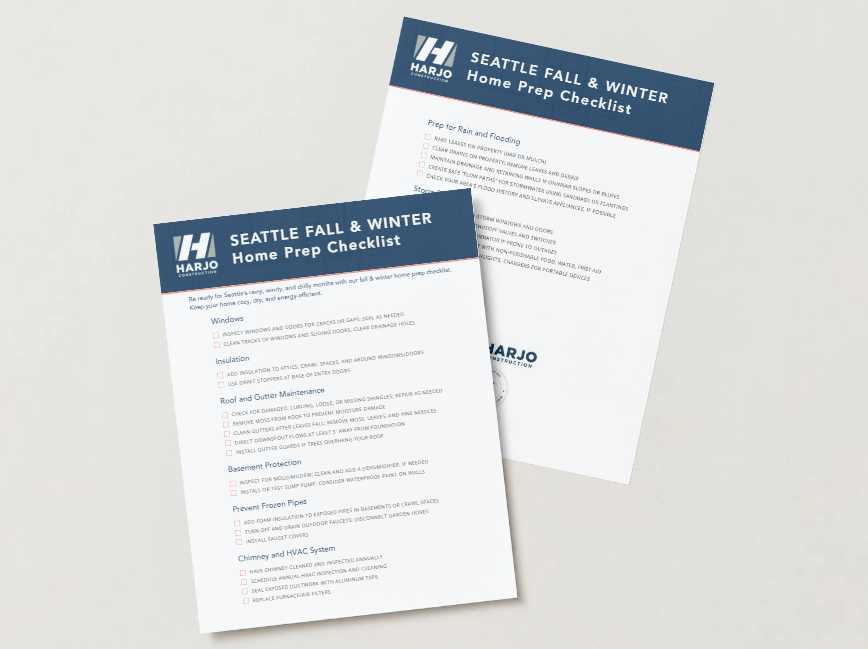
The Harjo Construction Team wishes you a very happy end of summer; enjoy those longer days, BBQs, bikes rides, and beach days. Taking some time to prepare your home prior to the winter months can save you a lot of hassle and money and can also prevent a possible life-threatening situation in the event of an extreme winter storm. We hope you can use this guide as a checklist to keep you and yours safe this winter. If you would like a PDF of our Seattle Fall & Winter Home Prep checklist (pictured above), send us an email and we’ll send it your way!
Check out our related blog post: Elevating Comfort with Energy-Efficient Remodeling Strategies.
Other helpful winter home prep links:
And if thinking about maintenance and winter home prep has your wheels turning about any remodeling projects, we’d love to chat!